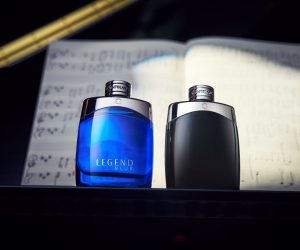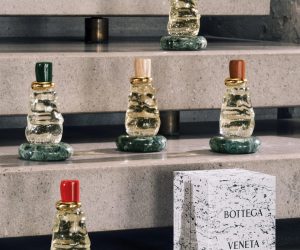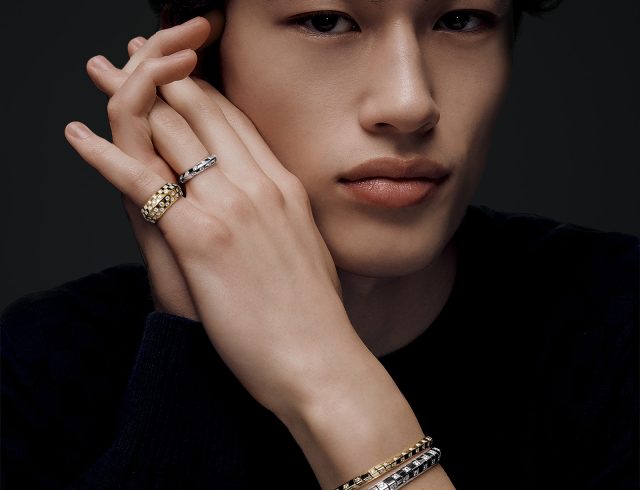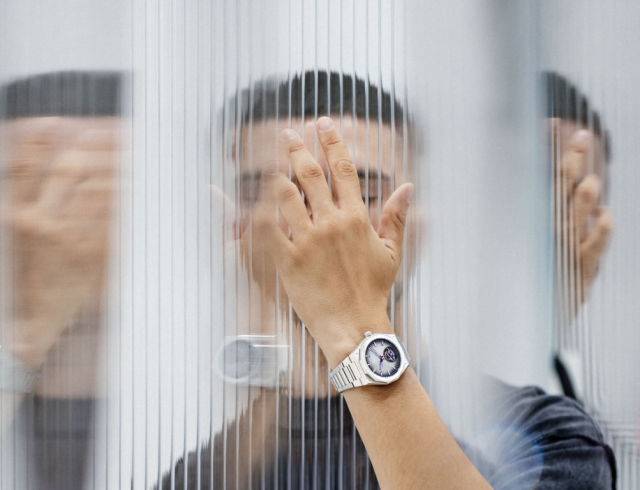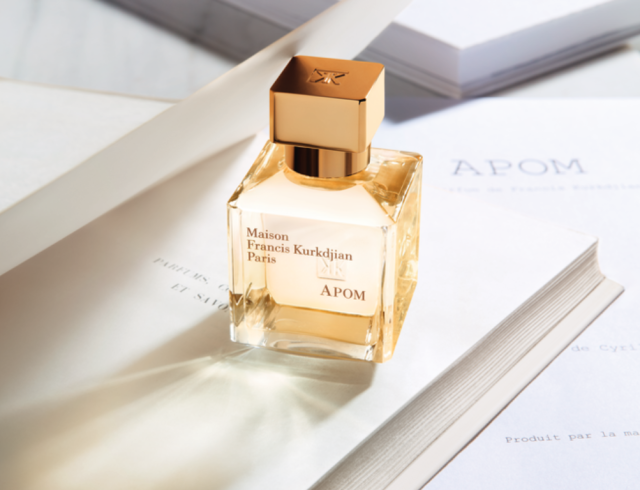
The first-ever re-release of a Maison Francis Kurkdjian fragrance — A Piece of Me (APOM) — as a gender-neutral creation prompts a candid conversation with the master creative of the namesake perfume house. In an exclusive interview, Francis Kurkdjian talks to Men’s Folio about what fragrance means to him, what inspires him, and what the horizon of the fragrance industry looks like in the years to come.
Before we speak about perfume, I wanted to ask you about a former passion — ballet. How did you fall in love with it?
Ballet was indeed a significant part of my childhood. My first encounter with it was when I was very young, and I was immediately captivated by the grace, discipline, and emotional expression that ballet embodies.The beauty of the movements, the dedication of the dancers, and the storytelling through dance all played a part in making me fall in love with ballet. It taught me the importance of precision and artistry, which has greatly influenced my work as a perfumer.
On that note, do you have a favourite ballet?
For classical ballet, I like Swan Lake, which Rudolf Nureyev choreographed. For contemporary ballet, I love Études by Harald Lander. My favourite contemporary work is The Rite of Spring by Pina Bausch.
I feel the art form is as connected to fragrance as couture is to the discipline and that your fragrances speak of and with the common language of grace, romance and desire. Are you a romantic or hedonistic person by nature?
I believe I am both.
Love can look different for different people and even different for the same person at different times. For Frances Kurkdjian at present, what does romance and desire smell like?
Romance and desire smell like the neck of the person I love!
And a scent that brings you the most comfort?
The holiday season is coming, and each year, it brings me back delicious and cosy scents. Each one of us has specific memories tied to Christmas from growing up or from specific moments in our lives. For me, it’s the hyacinth that starts flowering at this moment of the year, the mandarin fruits and the litchis you eat after dinner, and, of course, the Christmas tree — which I translated into the Mon beau Sapin Scented candle.

You mentioned in an interview that the art of fragrance is about thinking backwards to create a longing or inner desire for the first time. Do you look for this inspiration or do you let it find you? Why?
Inspiration is the invisible part of creation. It’s by far the hardest part of my work and the most challenging as time passes. My inspirations are not driven by raw materials. Classic and modern art, couture and lifestyle inspire me, but I always try to focus on a universal feeling.
It must be an idea that everyone around the globe can understand in their language and apprehend with their feelings.
What happens after you are inspired? Is the next course of action to recreate it? Or to recreate the emotion or feeling you got from experiencing the fragrance?
There’s a time of reflection during which I envision the creative territory I want to explore. At this stage, it’s not about the scent itself but its purpose and meaning. Perfume is truly a mirror of our time in a unique sensory way. Once I have gathered my inspiration, I search for a name. The name of the fragrance always comes first before the scent. It sums up what I want to say, the emotion I feel and the story I want to tell. It’s like a book’s title or a painting’s name. I start writing the formula using raw materials as words. Sometimes, I input new ideas; or I revisit my initial thoughts.
Do you think finding déjà cu or jamais vu in a fragrance is more interesting? Why so?
I think a mix of both, actually, as exploring creations never seen before is thrilling while giving a modern twist to déjà vu territories is also very interesting. In fragrance creation, clinging to tradition is not the key; it’s about rewriting the rulebook. Perfume is not an ode to the past but a canvas for innovation. Craftsmanship lays the groundwork — it’s about knowing your notes and blending them beautifully and carefully. But that’s just the start. The essence of modern perfumery is daring to be different.The unexpected story leads you to unexpected combinations, fresh contrasts, and bold choices that make people sit up and take notice.
We’re not here to simply repeat history but to make it. Perfumery should be fearless, always searching for that next great scent story. By challenging what we thought we knew about perfume, we create fragrances that aren’t just smells but signatures. Only by shaking up the old can we discover perfumes that resonate with today and captivate us tomorrow.
You also mentioned in an interview that you only talk about the perfume’s ingredients when you have nothing else to say. That would probably cause some alarm for beauty writers who love indulging in the specific make of perfumes; what’s the bets way to enjoy a fragrance and its ingredients?
It’s the story that guides me, not the ingredients. I think that you latch onto an ingredient when you have nothing else to say. It’s above all a question of emotion, what you feel wearing it.
When choosing a scent, the first thing you have to think about is: Does this fragrance move me? Do I feel emotion while wearing it? And then: Do I get comments from my entourage? Then, the technical aspects of the fragrance come, such as the longevity, volume and trail of the scent. So choosing the best and, therefore, the right perfume is, above all, a matter of time.
It’s like a love affair. You have the love at first sight and the love of your life, and they are rarely the same. To me, the trail is the most important part of a perfume. You have to wear it and wait to go deeper into a perfume. A perfume is created to be worn. So do not hesitate to try it on your skin for several days until you can make out a real and full idea of it.
Is there a particular ingredient in the perfume world that you feel is misunderstood or under-appreciated?
Some people think the rose theme is old-fashioned. However, an ingredient does not mean anything in a fragrance; there are many ways to twist a note to come up with something new. It’s a question of point of view, of finding the right or the new statement. It’s like a colour: what matters is what you blend it with. Rose can be very modern. It depends on how it is used and what you blend it with. Roses are very famous flowers and are very common in feminine fragrances. But the rose itself does not have a gender. It’s the way you use it that makes the difference.
Historically, rose has never had a prominent place in men’s fragrances. Rose is included in many fragrances, but plays a smaller role and you cannot even smell. It’s hidden behind other notes or blended with darker notes (patchouli, oud, leather) that blur it. When I created A la Rose in 2014, I wanted a bright, fresh, modern rose with pear and litchi facets. L’Homme A la Rose is its masculine counterpart. In this scent, you’ll find freshness, brightness and verticality. Even though it smells of rose, it remains truly masculine.
Rose is definitely an ingredient I use and divert a lot. A soon-to-be-revealed project is an artistic installation that will show at West Bund Art & Design, a prestigious contemporary art fair in Shanghai, in early November. This olfactive and artistic piece will explore the cultural ties between East and West, specifically between France and China, celebrating the 60th anniversary of the diplomatic relationship between the two countries. We will do that through scented rose petals, handmade at the Manufacture de Sèvres, the very best of French porcelain-making. You see, both the rose and the craft of porcelain come from China and became some of the finest symbols of French lifestyle around the world, showing how cultural influences and exchanges can beautifully influence our world.
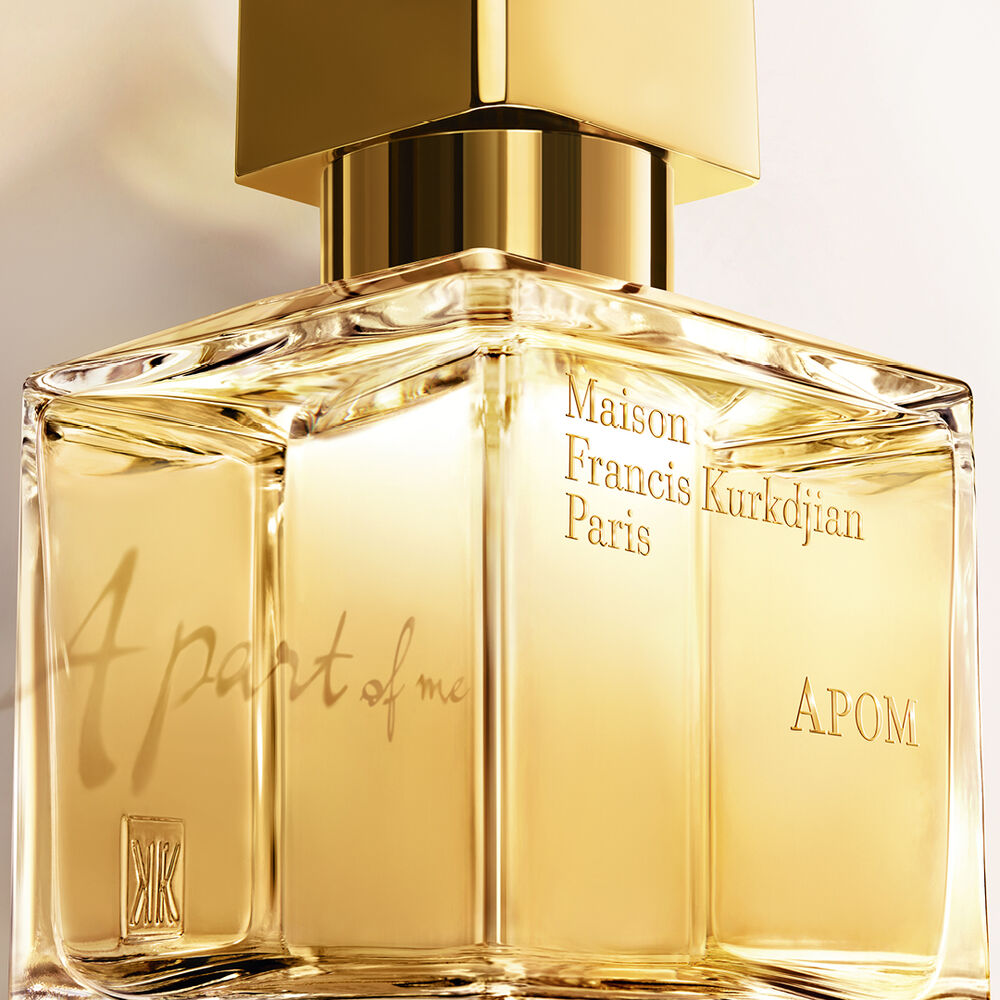
APOM is now back as a unisex fragrance. Why do you think the people of today are drawn to unisex fragrances?
As I said, perfume ingredients have no gender. Similar to fashion, silk asa raw material is genderless, but with convention, it’s masculine when it becomes a tie or feminine if it’s a dress. Today, there’s a vagueness in the notion of gender, especially among the youngest people. The young generation is more uninhibited and instinctive; they are freer with their body and their identity, and I think this is something very positive. Artists, models, dancers or singers — they free themselves from prejudices they may have faced and come out of the binary male and female.
Gender lives in movement and fluidity, and it has echoed in the world of fashion and beauty. This means you don’t have to be secluded in only one category. That’s a big move forward. The male-female dichotomy is being challenged; the lines between attributed genders are blurring, and people want to be able to define themselves freely. As perfume is profoundly linked to culture and feeling, it mirrors this tendency. That’s why, at Maison Francis Kurkdjian, I leave total freedom of expression tot hose who choose to wear my creations.
How did you choose which elements of its masculine and feminine predecessors to keep or combine?
Both fragrances were originally created in the same spirit and technically with the same backbone. Fifteen years ago, we launched APOM pour femme and APOM pour homme, two perfumes emanating from a single olfactory matrix, combining lavender, cedarwood and orange blossom over a sweet amber base.
The new APOM is more than the heir of its predecessors. I took the best of both: the women’s sunny sensuality and the men’s elegant addictiveness. Its ambery, flowery, Fougère sillage makes it a classic that is, however, resolutely anchored in modernity. Luminous and radiant top notes give way to a sweet and floral core, where bursting, aromatic lavender and orange blossoms are wrapped in the vanilla’s delicate warmth. APOM is an intimate fragrance that embraces one’s personality.
Just like a composer revisiting a manuscript, perfumers can also revisit past works to make “re-editions” of their compositions, to evolve and bring a new scent to new stratospheres. If you had the chance to revisit another one of your fragrances, which would it be and why?
APOM is actually the first fragrance I decided to revisit. This relaunch is proof of the claim of freedom that I have at Maison Francis Kurkdjian. Marc Chaya, President & Co-founder of the Maison, and I have built a playground in which I am free to follow my vision. I am free to return to my work if I wish, to propose a new version of my past work, like a painter who retouches his painting after years — a pentimento. Free to delist a perfume if it no longer corresponds to my expectations or to retouch it imperceptibly if I think it is necessary. We will soon be relaunching a fragrance duo that is really dear to me; both already existed at the beginning of the Maison. You’ll know more about this in a few months!
In your opinion, what is a perfume to a person? An extension or an addition to personality? Or does it not matter, so long as there is an impression?
In my opinion, perfume can be both an extension and an addition to a person’s personality. It’s part of someone’s identity. Tell me your fragrance, and I’ll tell you who you are. No one wears a fragrance they don’t like. You can wear a pair of uncomfortable shoes just to look good. You might do that, but wear a fragrance you don’t like.
If you wear a fragrance, it’s because you like it; if you like it, it’s because it’s who you are. It’s a part of oneself that we leave to others; that is ultimately what perfume is.
Last question — what do you think the world of perfume will look like in 10 years?
It’s always hard to predict how the industry will move on, but I can say that many changes have occurred over the past 20 years, so I believe they will be the same for the next two decades. That’s the course of history. We’re facing shifts on many levels: climate changes, a decrease in demography with the ageing world population, and generated artificial Intelligence. Challenges are opportunities; think out of the box and create new worlds.
New natural ingredients and molecules have also entered the perfumer’s palette with incredible new shades and facets. Sustainability and traceability are becoming increasingly important in our everyday lives. I’m also eager to discover what Artificial Intelligence will bring to the craft. This is very exciting, along with the virtual world. Opportunities have never been so vast.
Once you are done with this story, click here to catch up with our November 2024 issue.





